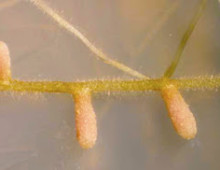DOE JGI partners Cornell on cassava project
Cassava, a rough and ready root crop that has long been the foundation of food security in Africa is finally getting the respect it deserves. The Bill & Melinda Gates Foundation and the Department for International Development of the United Kingdom (DFID) are investing $25.2 million to improve the staple crop’s productivity and build human… [Read More]
